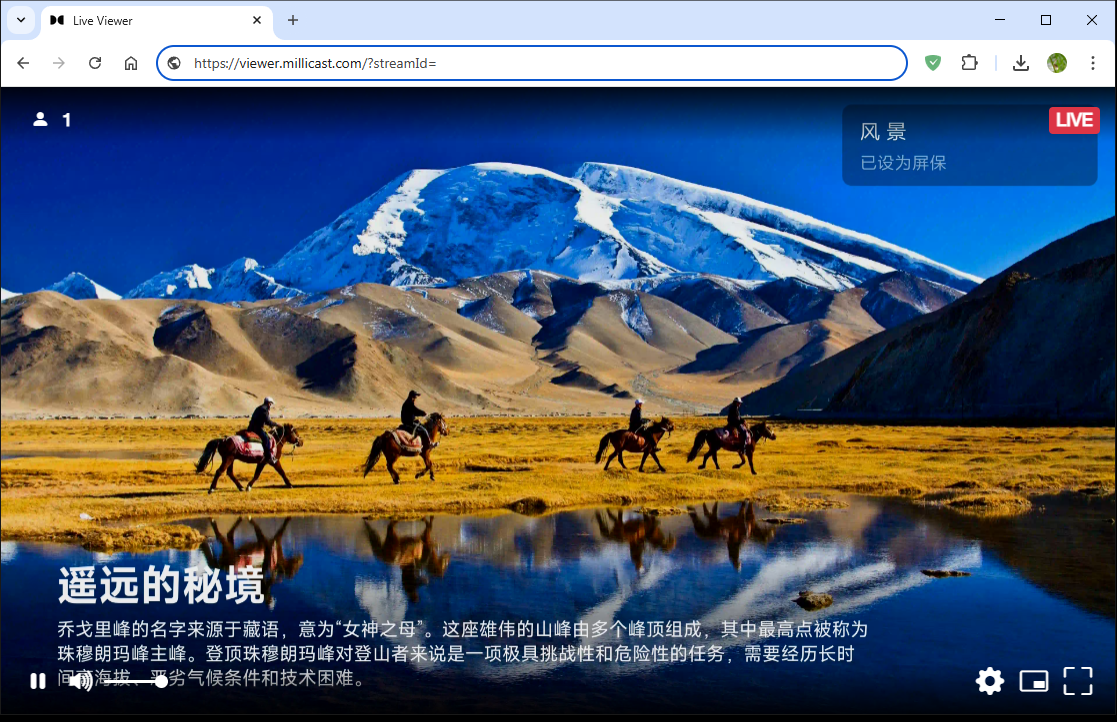WebRTC, RTMP, and WHIP - Choosing the Right Protocol for Your Streaming Needs
WebRTC, WHIP and RTMP are both widely used for streaming media, but they have distinct characteristics and are suited for different use cases. Here’s a detailed comparison,
What is WebRTC?
WebRTC (Web Real-Time Communication) is an open-source project that enables real-time communication directly in web browsers and mobile applications. It allows for peer-to-peer (P2P) communication, enabling features like video calls, voice calls, and data sharing without the need for plugins. WebRTC is designed for low-latency, real-time interactions, making it ideal for applications requiring immediate communication.
What is WHIP
WHIP (WebRTC HTTP Ingestion Protocol) is a protocol that allows media sources to push streams to a WebRTC endpoint. It is particularly useful for scenarios where a media source needs to send a stream to a WebRTC server, such as in live streaming applications. WHIP provides a way to bridge traditional media sources with WebRTC endpoints, enabling more flexible and scalable streaming solutions. Oupree Video Encoder intergrated WHIP, works with Tencent RTC (TRTC), Millicast, Dolby, etc. - webrtc video encoder, whip video encoder.
What is a WHIP Bearer Token?
A Bearer Token is an OAuth2-style access token used in the Authorization header for WHIP requests.
It is required to authenticate with the WHIP endpoint when publishing a WebRTC stream.
WebRTC Encoder settings,
Obtaining a WHIP (WebRTC HTTP Ingestion Protocol) Bearer Token from a WebRTC Provider,

Oupree WHIP Video Encoder works with millicast webrtc

Oupree WHIP Video Encoder works with Tencent RTC (TRTC)

What is RTMP?
RTMP (Real-Time Messaging Protocol) is a network protocol used for streaming audio, video, and data over the internet. It was originally developed by Adobe and is widely used for live streaming to platforms like YouTube, Twitch, and Facebook Live. RTMP is designed to provide reliable, ordered delivery of data, making it suitable for high-quality, scalable live streaming.
Key Differences
| Feature | WebRTC | RTMP |
|---|---|---|
| Latency | Ultra-low latency (<500ms, often sub-second) | Moderate latency (2-5 seconds) |
| Browser Support | Native support in modern browsers (Chrome, Firefox, Safari, Edge) | Requires conversion to HLS/DASH for playback in browsers |
| Transport Protocol | UDP (primarily) for speed, with TCP fallback | TCP-based for reliability and ordered delivery |
| Connection Type | Peer-to-peer (direct device communication) | Client-server (stream to a central server) |
| Scalability | Limited for large audiences; requires SFUs/MCUs for scalability | Highly scalable, works well with CDNs |
| Security | End-to-end encryption using DTLS-SRTP | Basic encryption; RTMPS (RTMP over SSL/TLS) for secure ingestion |
| Primary Use Case | Real-time communication (video calls, online gaming, live auctions) | Live streaming to platforms like YouTube, Twitch, Facebook Live |
Technical and Practical Considerations
Latency:
WebRTC: Provides near-instantaneous streaming, making it ideal for applications requiring real-time interaction, such as video conferencing and online gaming .
RTMP: Introduces a few seconds of delay, which is generally acceptable for live streaming events where real-time interaction is less critical .
Browser Support:
WebRTC: Works directly in modern browsers without additional plugins, making it easy to integrate into web applications .
RTMP: Not natively supported in browsers; requires conversion to HLS or DASH for playback .
Transport Protocol:
WebRTC: Uses UDP for faster transmission, which can result in occasional data loss but ensures low latency. It falls back to TCP if UDP is not available .
RTMP: Uses TCP, ensuring all data arrives in the correct order but at the cost of higher latency .
Connection Type:
WebRTC: Peer-to-peer model allows direct communication between devices, reducing the need for intermediary servers .
RTMP: Follows a client-server model, where the stream is sent to a media server before distribution to viewers .
Scalability:
WebRTC: Challenging to scale for large audiences; requires additional infrastructure like SFUs (Selective Forwarding Units) or MCUs (Multipoint Control Units) .
RTMP: Works well with CDNs, making it suitable for large-scale live streaming .
Security:
WebRTC: Offers built-in end-to-end encryption using DTLS-SRTP, ensuring secure data transmission .
RTMP: Basic encryption; RTMPS (RTMP over SSL/TLS) can be used for secure ingestion .
Use Cases
WebRTC:
Video Conferencing: Tools like Google Meet, Slack, and Zoom use WebRTC for real-time video calls .
Online Gaming: Real-time interaction and low latency are crucial for a smooth gaming experience .
Live Auctions and Trading: Requires ultra-low latency to ensure real-time interaction .
RTMP:
Live Streaming to Platforms: Widely used for streaming to YouTube, Twitch, and Facebook Live, where reliability and scalability are more critical than ultra-low latency .
High-Quality Broadcasts: Suitable for events where adaptive bitrate streaming and long-duration stability are important.
Conclusion
For Ultra-Low Latency and Real-Time Interaction: Choose WebRTC.
For Scalable Live Streaming to Large Audiences: Choose RTMP.
Hybrid Approach: Some setups use RTMP for ingestion (sending the stream to a server) and WebRTC for delivery (ultra-low-latency playback to select viewers) . Understanding these differences will help you select the right protocol based on your specific streaming needs.





